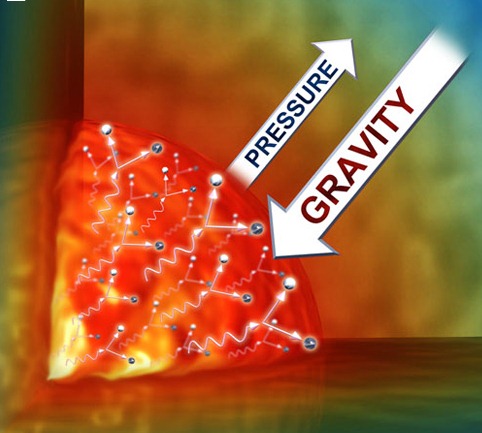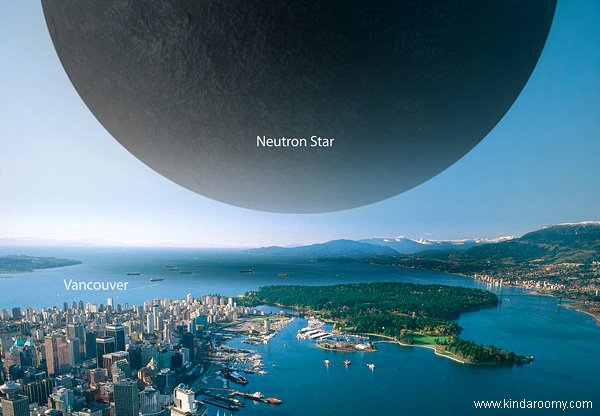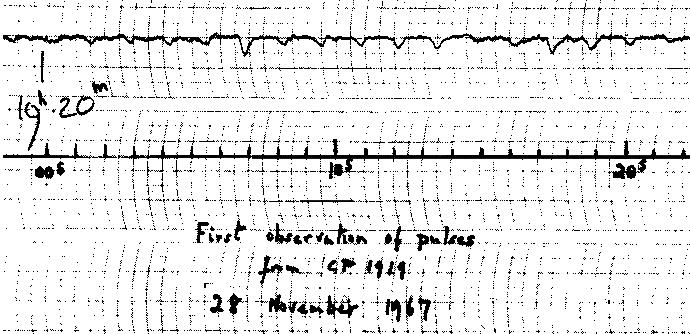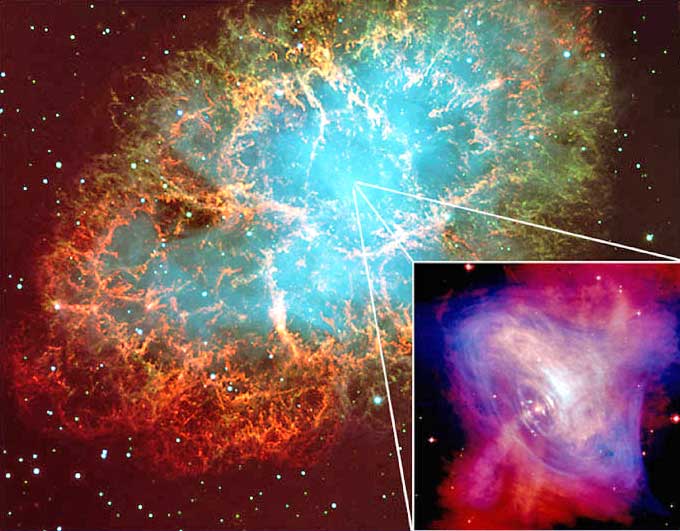
Caption: This X-ray image of
the Cassiopeia A (Cas A) supernova remnant is the official
first light image Chandra
X-ray Observatory. Two shock waves
are visible: a fast outer shock and a slower inner shock. The
bright object near the center may be the long sought neutron
star or black hole that remained after the explosion that
produced Cas A.
NEUTRON STARS
At the end ... gravity always wins |
Neutron Stars:
A neutron star is the
stellar remnant left behind of one of the most cataclysmic
events in the Universe: a
Supernova explosion. As the
nuclear fuel in the star is exhausted, gravity takes over and
drives the star into its final state. The final state is a
compact star, such as a
White Dwarf, a Neutron Star, or
a Black Hole. Stars support themselves against gravitational
collapse by generating an enormous pressure in the interior of
the star. The three most important sources of pressure are:
| "Radiation" Pressure |
Scales
as T4 |
| "Classical"
Pressure |
Scales as T and
N/V |
| "Quantum" Pressure |
Scales
as (N/V)5/3 atT=0 |
Our Sun is now supported by
radiation and classical pressure. Yet, at the final stages of
its existence - as a white-dwarf star - it is the
quantum mechanical pressure from its electrons that will
support the Sun. For very massive stars, namely, those
exceeding the Chandrasekhar limit (of 1.4 Solar masses)
electron pressure is not effective and the star collapses
under its own weight.

In a fraction of a second
the following very dramatic changes ensue:
- The core of the star
collapses to the size of a small town: 10 km
- Protons and electrons are
converted into neutrons
and neutrinos
- The quantum pressure from the neutrons halts the
collapse of the core
- A shock-wave develops and the neutrinos escape
from the star
- The envelope of the star is
blasted away in a Supernova Explosion
- A minuscule core is left
behind as a Neutron
Star
In 1931 Chandrasekhar
predicted that a star exceeding 1.4 solar masses is too heavy to
support its weight by the quantum pressure from its degenerate
electrons and will not die as a white-dwarf star (he did not say
what its ultimate fate was going to be). The neutron - one of
the two constituents of the atomic nucleus - was discovered by
Sir James Chadwick in 1932. In that same year the Russian physicist Lev Landau predicted that
neutron stars might exist, with their weight supported by the
quantum pressure from the neutrons. Only two years later Walter
Baade (Mount Wilson) and Fritz Zwicky (Caltech) suggested that
neutron stars might be the end point in the evolution of a very
massive that dies in a majestic explosion - known asa Type II
Supernova. They speculated that the collapsed core could be
dense enough to fuse together electrons and protons to form an
extremely dense star: A
Neutron Star.
The Nature of a Neutron
Star

As the core of a very
massive star undergoes a collapse and its radius shrinks to an
incredible size of only 10 km (the radius of the Sun is
700,000 km) its surface temperature will increase to about a
few million degrees. According to Wien's law, this very hot
object will radiate most of its energy at a wavelength of
about 1 nm, or in the X-ray part of the electromagnetic
spectrum. Thus, most of the radiation emitted from this very
compact object is undetected by terrestrial Optical and
Radio telescopes. Moreover, while the gravitational energy is
being converted to kinetic energy (rising the temperature of
the star) other quantities are being conserved (i.e., remain
unchanged in the collapse). These are:
Angular Momentum: Scales as
Radius2/Period
Magnetic Flux: Scales as
Radius2*MagField
Mass of the Star: Scales as
Radius3*Density
| Properties |
Sun |
Neutron
Star |
| Radius (in
km) |
700,000 |
10 |
| Temperature (in
K) |
5,800 |
1,000,000 |
| Magnetic Field
(Bsun) |
1.000 |
1,000,000,000 |
| Density (grams/cm3) |
1.409 |
100,000,000,000,000 |
A 50-kg lady on a neutron star will weigh approximately 1000
billion kg ! Such an enormous gravitational attraction is
needed for the star not to fly apart as it rotates 10 or 100
times every second.
Hence, neutrons stars have
extremely large temperatures, magnetic fields and densities.
Yet in spite of being so hot, the neutron star has low
luminosity because of its very small size. Neutron Stars are
extremely difficult to detect, indeed! However, in 1967 a
graduate student by the name of Jocelyn
Bell detected a very peculiar radio signal made out
of very regular pulses of about one second.

At one point she and her Professor speculated that the signal
might have come from a distant civilization and considered
naming it LGM for the "Little
Green Men". As many more pulsars were found - with periods
ranging from few milliseconds to seconds - astronomers were
convinced that these were radio signals from astronomical
bodies which they named pulsars,

for "pulsating" stars. Now
we know that calling a neutron star a pulsar is a misnomer, as
the radio signal is due to the rotation of the star, rather
than to a pulsation. The rapidly-rotating neutron star emits
beams of radiation that sweep around the sky such as
lighthouses do. Once the beam of radiation crosses our line of
sight, we detect these periodic
"pulses". The best known pulsar to date lies in
the Crab Nebula which is the
remnant of a star whose explosion was witnessed by Chinese
astronomers in 1054 AD.






